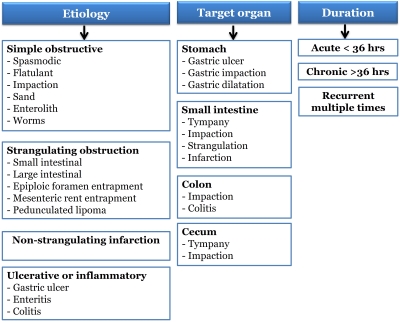A review on equine colic: Etiology, differential diagnosis, therapy, and prevention
Authors: Ragab M. Fereig
Ger. J. Vet. Res
2023.
vol. 3, Iss. 4
pp:1-12
Doi: https://doi.org/10.51585/gjvr.2023.4.0063

Abstract:
Equines encompass various animals, such as horses, donkeys, ponies, mules, and zebra. These animals are means of transportation, leisure, source of meat, and income worldwide. Equine colic is among the equines' most important, common, and emergent health issues, particularly in horses. The complexity and anatomical characteristics rendered equines prone to equine colic. Different classifications for equine colic are known depending on cause, affected site, and duration. In the current study, we have exhaustively focused on etiological, clinical findings, clinical and laboratory diagnosis, and eventually, the treatment and control of equine colic. Such knowledge is lacking, and some reports discuss only one or few aspects. Because they are the most prevalent cause, we have focused on gastrointestinal disorders as a cause of colic. Moreover, recent approaches for diagnosis and prognosis were investigated mainly via the biomarkers analysis assay. Because of its importance, similarity to other equines, worldwide distribution, and plenty of available research, we mostly specified our description of horses as a model of equine animals. This review offers valuable insights for veterinarians and equine practitioners, potentially aiding in mitigating health risks and fatal consequences associated with colic in equines.
Keywords:
Colic, Diagnosis, Equines, Horse, Intestine, Treatment
Statistics:
Article Views: 1884
PDF Download: 106